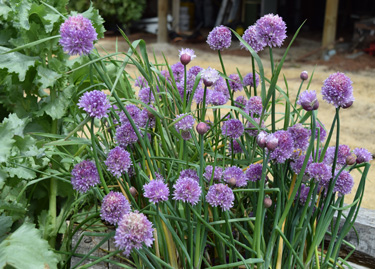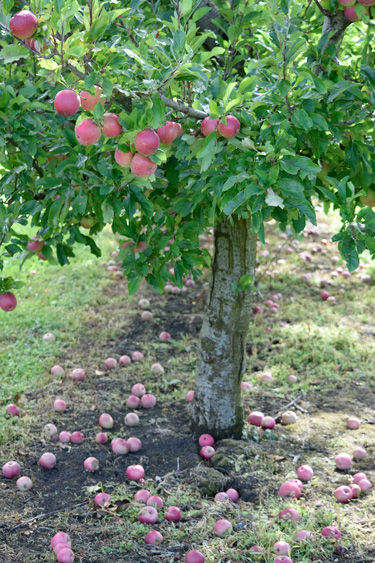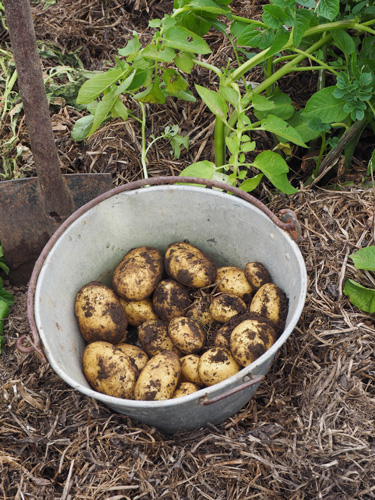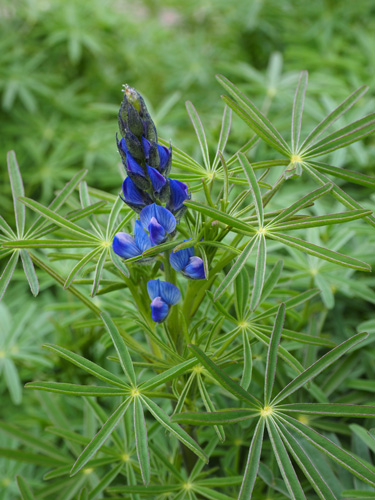Nutrition on a shoestring
It’s no secret that eating more veges and fruit means more of the good things - fibre, vitamins, antioxidants and less of the bad - fat, sugar and other precessed foods.
When the budget is tight, the last foods we should cut out are the ones that keep us healthy. Cutting out junk food and reducing meat consumption in favour of more fruit and vegetables is better for the planet and can also save money.
If you grow your own the potential savings are even greater. Food picked fresh from the garden contains the most nutrients and it’s super convenient, saving time with fewer trips to the supermarket.
How to eat better for less:
| 1 | Be smart about what you grow. Plant what you and your family most like to eat and what is easily stored or frozen after harvest. Focus on easy crops that have high yields and keep on giving over many months. Examples are zucchini for summer and silver beet for a year round green. If you are new to vege gardening or only have limited space, begin with a small plot focusing on leafy greens. |
| 2 | For a continuous supply that avoids gluts plant a punnet of seedlings every two or three weeks or get into a regular seed sowing routine. Combo seedling packs from the garden centre are ideal if you want to grow a wider variety in a small space. |
| 3 | Plant fruit trees. Once established, fruit trees require very little work and are the ultimate proof that money does grow on trees. Before planting, check which fruit trees perform best in your climate. In a small garden think multipurpose; fruiting plants can double as screen trees, sun shades, hedges, and wall decoration. Grown over a pergola, a grape vine provides beautiful summer shade while letting the sun through in winter. In a large garden, plant a variety of trees that will give you fruit at different times of the year. Include nut trees for a valuable source of protein. |
| 4 | Get clever with seeds. The patience that goes into growing plants from seed is rewarded with great satisfaction and can save money too. The trick is not to sow too much at a time but surplus seedlings can always be swapped with friends. Start with fresh, high quality seeds. The older the seed, the more likely it will disappoint. Saving seed from last years crop can save money for many crops, but be aware that some of the highest yielding, most disease resistant crops come from specially bred hybrid seeds that won’t come true to type from last years plant. Seedlings that give rose to poor yields or lack of flavour (like that wildling pumpkin that grew from your compost heap) may not be the best use of space. |
| 5 | Plant herbs. Ditch costly meal bases in plastic packets and grow your own flavours. Using herbs for flavour reduces the need for sugar and salt. Herbs can also help reduce caffeine consumption too; try herb teas made from fresh garden herbs like mint, thyme, lemon verbena, and chamomile. Herbs are among the easiest plants to grow in the garden, or in pots. Perennial herbs such as rosemary, thyme, oregano, mint and sweet bay grow all year round and last years in the garden. Versatile and highly nutritious parsley is an indispensable plant for any good cook and unlike most herbs, it will thrive in a spot with less sun. |
| 6 | Grow high-energy staple crops. Main crop potatoes can be stored away to feed a family right through winter and spring. Sweet pumpkins grown over summer are among winters most nourishing vegetables. Root crops (parsnip, carrots, beetroot, yams, swede) will keep in the ground until you are ready to eat them. Onions and garlic planted now will be ready for harvesting in summer. |
| 7 | Grow for the freezer. Whether you buy fruit and vegetables at peak season or grow your own, filling a freezer has always been a great way to feed a family on a tight budget. Make heat-and-eat soups, sauces and pestos. |
| 8 | Get into sauerkraut. Fermenting is a super healthy way to preserve garden surpluses. Because it involves no heating, fermentation preserves all the nutrients and enzymes. The microbes involved in fermentation are themselves beneficial to our digestive system, making nutrients more available for our bodies to absorb. Turning cabbage into Sauerkraut is quick and easy. All you need is cabbage and salt. Also good for fermenting are: carrots, turnips, beetroot, radishes, celeriac, cucumbers, peppers, apples, pears, lemons and limes, and grapes for the backyard wine maker. |
| 9 | Get real about pests. An apple with a few spots probably won’t sell in the supermarket but at home, it’s nothing to panic about - a certain level of damage is easily tolerated. On the other hand, seriously reduced yields and crop failures are a different story. Practice the principles of Integrated Pest Management to keep on top of pests and diseases, reducing your reliance on pesticides. Combine watering and feeding with sensible crop hygiene, and practice crop rotation as much as you can. Reusable crop covers provide protection from birds and insect pests. When extra help is needed ask at your garden centre for a cost-effective, environment-friendly remedy. |
| 10 | Make your own compost. To replace what’s removed with each harvest we must constantly build the soil with organic matter and add nutrients for new plants to thrive. Adding compost means any fertiliser you do add is more available to plant roots. |
| 11 | Grow your own manure. A ‘green manure’ or ‘cover' crop is sown in autumn and then dug into the soil in early spring. It’s a great way to rest and revive a patch of soil after intensive vege growing - adding nutrients, restoring organic matter, earthworms and beneficial microorganisms. |
| 12 | Join forces. Gardening is all the more fun when it brings people together to trade ideas and share surpluses. Encourage friends and neighbours to give it a go.
|
Tip:
Sow radishes between rows of carrots (or other root crops). Fast growing radishes act as row markers for the carrots and help block the weeds. They are ready for harvesting within a month after sowing, leaving space for the young carrots to keep growing.
For the freezer:
- Apples
- Basil for pesto
- Beans
- Berries
- Broccoli
- Citrus (juice)
- Eggplant (pasta sauce)
- Figs
- Feijoas
- Herbs (for pesto)
- Plums
- Peaches
- Pumpkin (puree, soup)
- Spinach
- Tomatoes (whole or sauces)
- Vegetable soups
Grow your own manure
A green manure improves moisture retention and drainage. As well as providing bulk nitrogen, it will bring deep minerals to the surface. It also blocks weed growth and protects the soil in heavy rain. Sowing a cover crop will make the soil much easier to dig in spring. As the roots grow over winter they keep the soil aerated and reduce compaction. Cover crops also help break disease cycles.
In New Zealand gardens the traditional cover crops are lupins and mustard. Wheat, barley or oats may also be used to add organic bulk. Or a mixture may be sown. Mustard helps against problematic soil fungi but should not be sown in soil that has just had a brassica crop. Lupins add extra nitrogen via special ‘nitrogen fixing’ bacteria in their root nodules which take nitrogen from the air and convert it into a form that plants can use.
Lupin is best dug in just before flowering. If you want to see the pretty blue flowers you can dig it in just after flowering, but flowers will take some of the nitrogen from the soil. You will also need to factor in time for the green matter to break down before you plant your spring crops. Allow at least three weeks, ideally six. When digging in your cover crop, it’s a good idea to take the opportunity to dig in lime and animal manure at the same time.

1-Mar-2020

Blueberries

Kale and celery

Chives

Apple tree

Potatoes

Blue lupin - a green or manure crop

